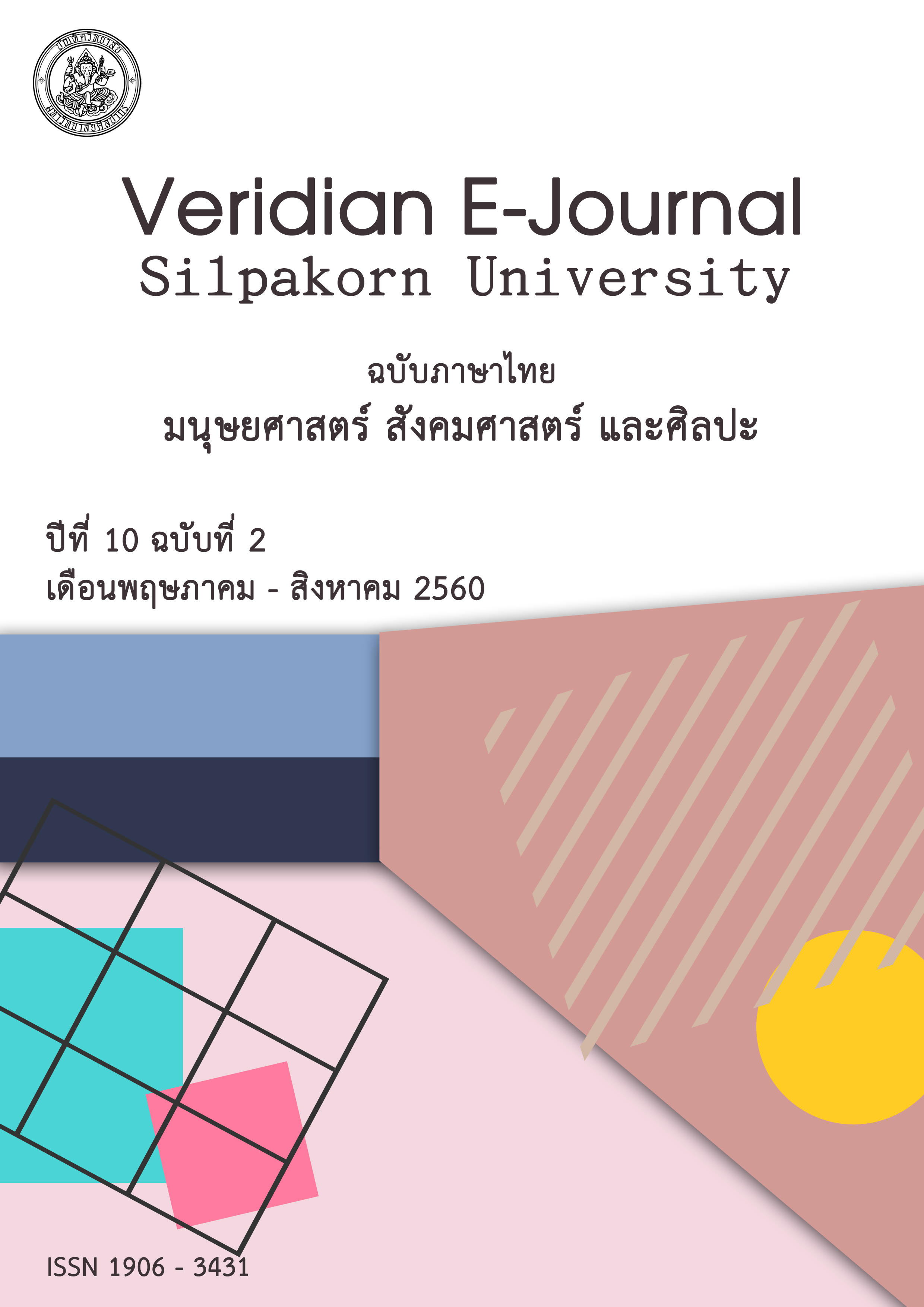ปัจจัยที่ส่งผลต่อความสำเร็จในการจัดการอาชีวศึกษาระบบทวิภาคีของสถานศึกษา ในจังหวัดลำปาง สังกัดสำนักงานคณะกรรมการการอาชีวศึกษา
Main Article Content
Abstract
การวิจัยนี้มีวัตถุประสงค์เพื่อ 1) ระดับปัจจัยที่ส่งผลในการบริหารจัดการศึกษาอาชีวศึกษาระบบทวิภาคีสถานศึกษาในจังหวัดลำปาง 2) ระดับความสำเร็จในการจัดการศึกษาอาชีวศึกษาระบบทวิภาคีสถานศึกษาในจังหวัดลำปาง และ 3) ปัจจัยที่ส่งผลต่อความสำเร็จในการจัดการศึกษาอาชีวศึกษาระบบทวิภาคีสถานศึกษาในจังหวัดลำปาง สังกัดสำนักงานคณะกรรมการการอาชีวศึกษา กลุ่มตัวอย่างที่ใช้ในการวิจัยครั้งนี้ ได้แก่ ผู้บริหารสถานศึกษา จำนวน 16 คน หัวหน้างานอาชีวศึกษาระบบทวิภาคี จำนวน 6 คน เจ้าหน้าที่งานอาชีวศึกษาระบบทวิภาคี จำนวน 27 คน ครูนิเทศ จำนวน 43 คน ครูประจำแผนกช่าง จำนวน 44 คน ครูฝึกในสถานประกอบการ จำนวน 56 คน ผู้จัดการ จำนวน 37 คน เจ้าของสถานประกอบการ จำนวน 19 คน รวมทั้งสิ้น จำนวน 248 คน เครื่องมือที่ใช้ในการวิจัยเป็นแบบสอบถาม แบบมาตราส่วนประมาณค่า 5 ระดับ มีค่าความเชื่อมั่นเท่ากับ 0.926 สถิติที่ใช้ในการวิเคราะห์ข้อมูลคือร้อยละ ค่าเฉลี่ย ส่วนเบี่ยงเบนมาตรฐาน และวิเคราะห์การถดถอยพหุคูณ ผลการวิจัยพบว่า
- ระดับปัจจัยที่ส่งผลในการจัดการศึกษาอาชีวศึกษาระบบ ทวิภาคีสถานศึกษาในจังหวัดลำปาง สังกัดสำนักงานคณะกรรมการการอาชีวศึกษา ในภาพรวมอยู่ในระดับมากที่สุด เรียงลำดับจากมากไปหาน้อย ได้แก่ ปัจจัยด้านหลักสูตรและการจัดการเรียนการสอน รองลงมาคือ ปัจจัยด้านนักเรียน ปัจจัยด้านอาคารสถานที่และสิ่งอำนวยความสะดวก ปัจจัยด้านสถานประกอบการ ปัจจัยด้านชุมชน ปัจจัยด้านผู้บริหาร และปัจจัยด้านครูผู้สอน ตามลำดับ
- ระดับความสำเร็จในการจัดการศึกษาระบบทวิภาคีของสถานศึกษาในจังหวัดลำปาง สังกัดสำนักงานคณะกรรมการการอาชีวศึกษา โดยภาพรวมอยู่ในระดับมาก เรียงลำดับจากมากไปหาน้อย ได้แก่ ด้านสมรรถนะวิชาชีพ รองลงมาคือ ด้านสมรรถนะหลักและสมรรถนะทั่วไป และด้านคุณลักษณะที่พึงประสงค์ ตามลำดับ
3. ปัจจัยที่ส่งผลต่อความสำเร็จในการจัดการศึกษาอาชีวศึกษาระบบทวิภาคีสถานศึกษาในจังหวัดลำปาง สังกัดสำนักงานคณะกรรมการการอาชีวศึกษา ได้แก่ ปัจจัยด้านหลักสูตรและการจัดการเรียนการสอน ปัจจัยด้านชุมชน และปัจจัยด้านสถานประกอบการ มีประสิทธิภาพในการทำนาย ร้อยละ 47.50 สามารถเขียนเป็นสมการวิเคราะห์การถดถอยดังนี้ = 11.839 + 0.157(X6) + 0.167(X5) + 0.227(X4)
This study aim to study: 1) the level of factors affecting success of dual vocational training in educational institutes in Lampang Province, 2) the level of success of dual vocational training in educational institutes in Lampang Province, and 3) the factors affecting success of dual vocational training in educational institutes in Lampang Province under Office of Vocational Education Commission. The 248 research samples consisted of 16 educational institute administrators, 6 heads of dual vocational training, 27 officials of dual vocational training, 43 supervising teachers, 44 teachers in technician division, 56 practicing teachers in work places, 37 managers, and 19 owners of work places. The research tool was a 5-level rating scale questionnaire with reliability at the 0.926 level. The data were analyzed by using percentage, mean, standard deviation, and regression analysis. The research results were as follows:
- The factors affecting success of dual vocational training in educational institutes in Lampang Province under Office of Vocational Education Commission were overall at the highest level. The aspects of factors could be ranked in descending order of their means as follows: curriculum and management of learning and teaching, students, buildings and facilities, work places, community, administrators, and teachers.
- The success of dual vocational training in educational institutes in Lampang Province under Office of Vocational Education Commission were overall at a high level. The aspects of success could be ranked in descending order of their means as follows: functional competency, core and general competencies, and desired characteristics.
- The factors affecting success of dual vocational training in educational institutes in Lampang Province under Office of Vocational Education Commission consisted of curriculum and management of learning and teaching, community, and work places, with the predictive efficiency for 47.50%, and the equation of regression analysis could be formulated as follows: = 11.839 + 0.157(X6) + 0.167(X5) + 0.227(X4).

